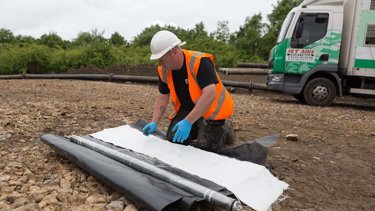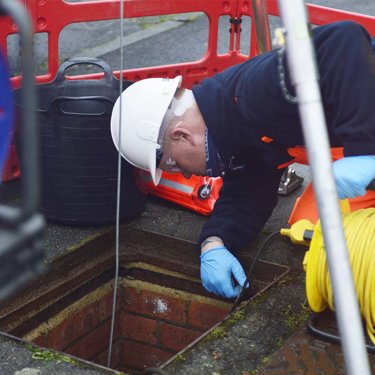Trees are the root of many drainage issues
18 August 2020
Tree root intrusion is one of the most common causes of faults relating to drainage networks. Over the years, countless businesses, public sector organisations and homeowners have called upon Jet Aire to investigate and address problems caused by roots. It’s an issue that often requires urgent attention: if left unchecked, blockages can result in overflowing manholes and a leak from a ruptured pipe can saturate the ground around it. In a worst-case scenario, it will lead to subsidence and affect the foundations of buildings.

Why are drains vulnerable to roots?
Tree roots grow in search of nutrients and water, so they are naturally drawn to moisture from drains and pipes. The trenches and disturbed earth around pipes make it easier for roots to travel through the ground and reach drainage structures.
If there is a weakness in a pipe construction, nature has a way of finding it. A crack in a pipe (often caused by ordinary wear and tear or extreme weather) is a common point of entry for a tree root. Once the root has penetrated, it will continue to grow and enlarge the crack to exacerbate the problem. The weakened area can also become a welcome target for the root systems of other plants nearby.
Pipe joints are also a potential area of weakness exploited by roots. Misaligned joints and poorly connected pipes are especially vulnerable. Once inside, roots will continue to grow and expand, increasing the pressure on pipes. Eventually the pipe will break or collapse, requiring costly and disruptive excavation to replace it.
If you have trees within the grounds of your business premises or property, you should be wary of the potential effects on your drainage system. Even if there is no evidence of damage (e.g. slow drainage or surface pooling/saturated ground) it is prudent to carry out periodic ‘health checks’ of any drain runs which could be affected by nearby trees and other plants. Doing so can avert problems before they become more advanced and severe in their impact.
Investigating and assessing damage
Various methods are available to rectify faults and prevent additional damage from occurring. A useful first step is a CCTV drain survey to identify the location and extent of the problem. CCTV camera technology can be inserted into a drain to provide a comprehensive, in-depth inspection of a drainage system with accurate mapping. Engineers operate the cameras to provide live feedback of footage which enables a clear view of any root penetration.
CCTV survey footage often helps to determine the best course of action to rectify damage from tree roots. When the issue is not severe and the pipe has not been structurally compromised, the solution is the removal of the roots followed by the reinforcement of the existing pipe.
Removing roots from pipes
Hydraulic root cutters can be used to quickly and effectively remove roots. Their blades are powered by high-pressure jetting equipment. Attached to the jetting hose and centred in the pipe, these cutters can operate back and forth in the pipe until the obstruction is cleared.
Reinforcing damaged pipes
Once the tree roots and obstacles have been removed, the next step is the remediation of faults and weaknesses in the pipe. To avoid the downtime and expense involved in excavation, it is preferable to use trenchless (or ‘no-dig’) solutions.
One trenchless option is Cured in Place Pipe (CIPP) patch repair. This involves a length of glass fibre matting which is coated in resin and rolled around a “packer”, which is then pulled through the pipe into the area damaged by the tree root. The packer is then inflated, forcing the patch to adhere to the pipe wall. Once the patch has cured, the packer is deflated and removed. The patch will close off the entry point and prevent the roots from growing back through it.

A second option is relining the pipe. A more comprehensive alternative to localised patching, this solution involves the insertion of a resin-impregnated liner which can be cured using ambient, hot or ultra-violet methods. When cured, it effectively creates a new pipe within the existing pipe, providing a robust defence against future tree root growth. It is the most reliable method to stabilise the structural integrity of the pipe in the long term.
For advice on protection against tree root intrusion, contact our team of experts.
Here to keep your drainage flowing freely
Our experts are available now to help you understand and improve the condition of your drainage.
Speak to our experts

